Ancient Aletrium is one of the oldest towns in Lazio. Alatri is a jewel in Ciociaria lying on a hill covered with olive groves. It has great cultural value due to its archaeological and medieval remains and many folk events.

Alatri was founded in the 6th century BC. Alatri’s origins are linked to the Ernici, the ancient Italic people who built the Acropolis and the gigantic cyclopean orthogonal walls surrounding the old town.
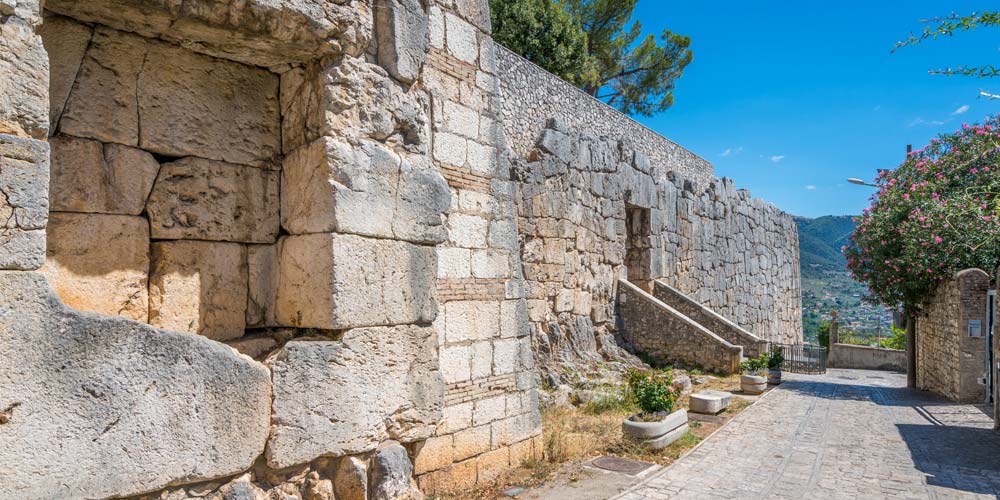
History and legend are mixed in the city of Alatri. While its birth is attributed to the God Saturn, it is also attributed to the Cyclopes for its Megalithic Walls up to 20 metres high, 3 km long and with 5 doors.
According to the legend of Alatri’s Christmas, the city was built based on the path of the first ray of sunlight on the day of the summer solstice. Every year on 21 June, the inhabitants climb the acropolis to watch the first ray of sunlight touch the eastern wall.
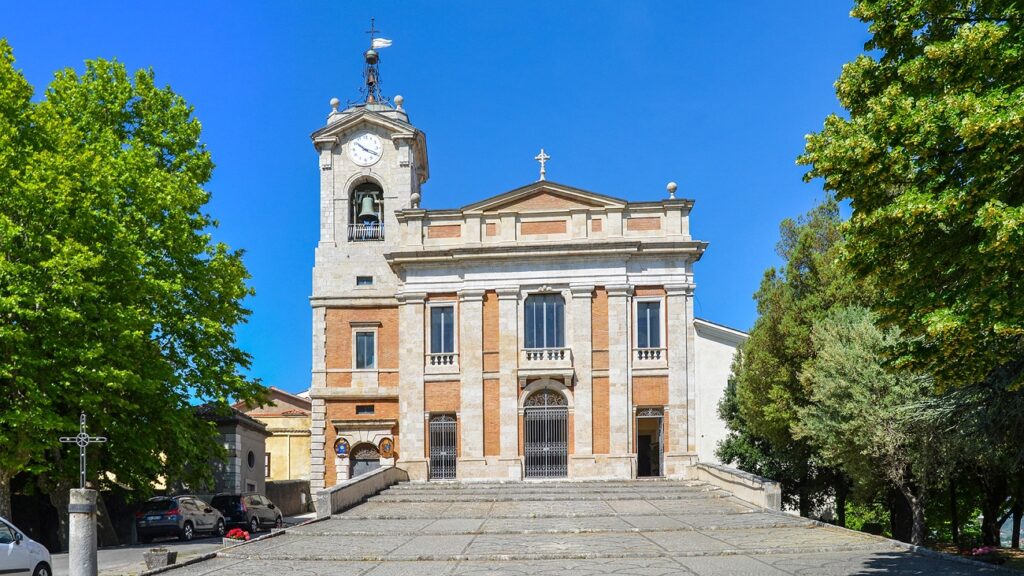
St. Paul’s Cathedral – alatriturismo.it
On top of the Acropolis stands St. Paul’s Cathedral next to the Bishopric, both built in the early Middle Ages and renovated in 1700. Inside the Basilica is the relic of the Incarnate Host, a miracle that occurred in 1227 and was recognised by the Church.
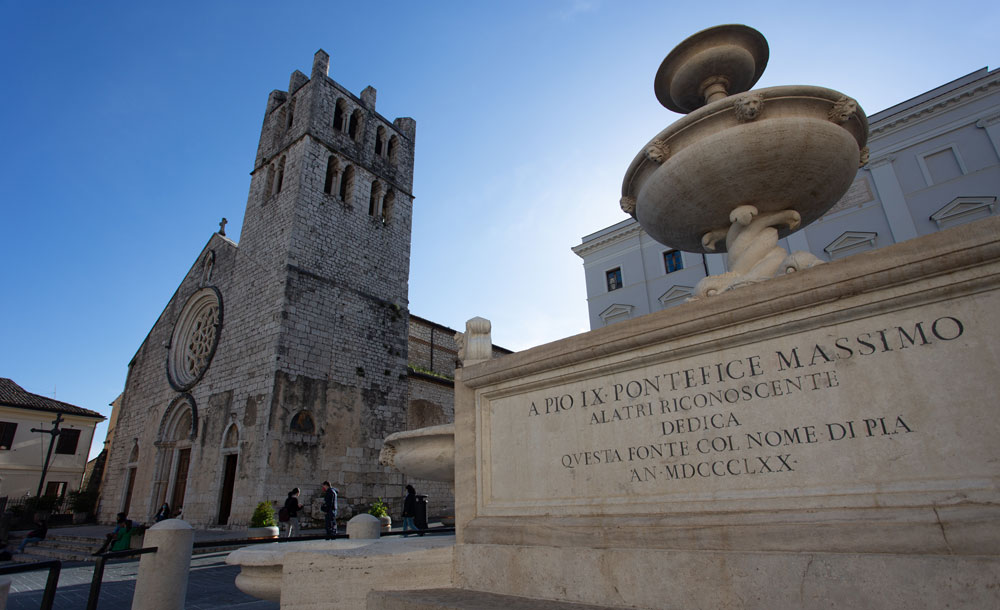
In the historic centre, there are numerous monumental fountains, the medieval Church of Santa Maria Maggiore, Palazzo Gottifredo and the former convent of San Francesco.
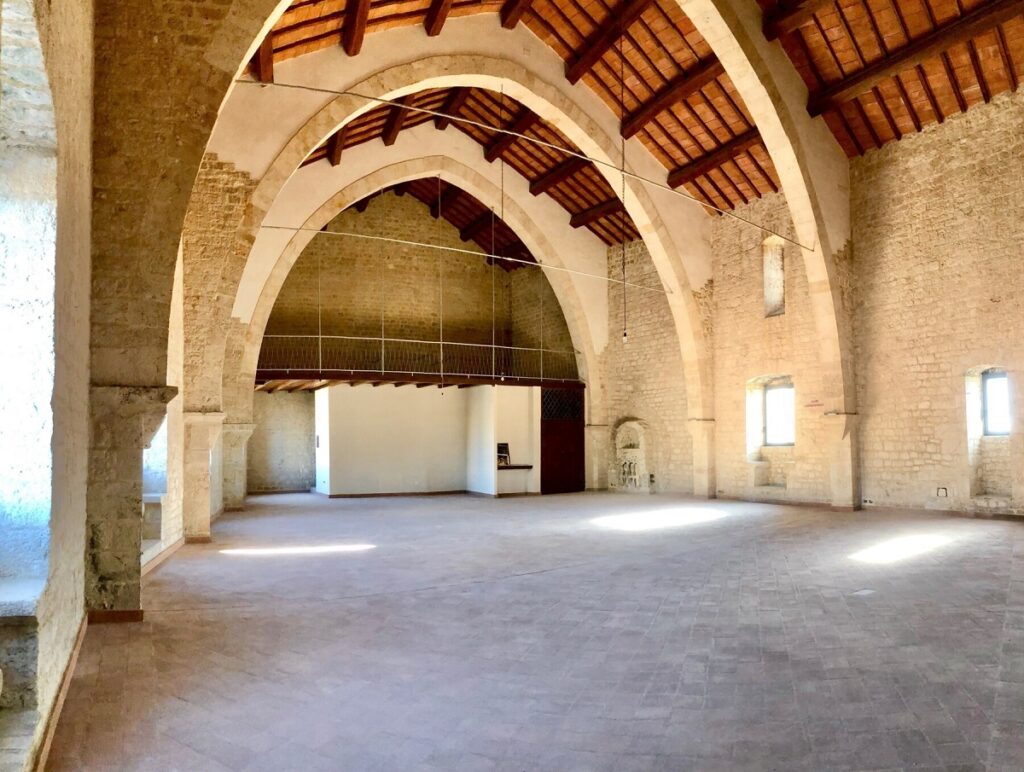
Palazzo Gottifredo – retedimorestorichelazio.it
Palazzo Gottifredo was commissioned in the centre of Alatri in the mid-1200s by Cardinal Gottifredo di Raynaldo, from whom it takes its name. The palace served both representative and defensive functions. The building consists of four structures, three dating back to 1200-1300 and one to 1700.
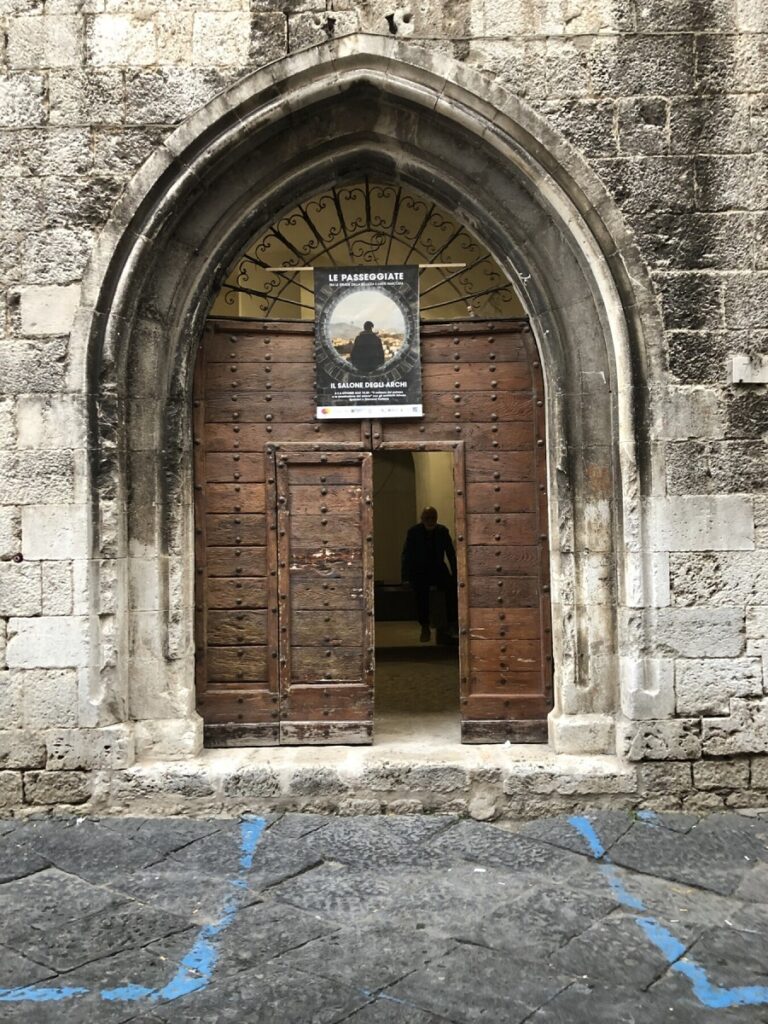
Palazzo Gottifredo, portone d’ingresso – retedimorestorichelazio.it
The Casa-Torre is the original Romanesque building, once the residence of Cardinal Raynaldo and now used as the Civic Museum of Alatri. Palazzo Gottifredo is a Historic Residence in Lazio and access is by appointment only.

Christ in the Labyrinth in the cloister of St. Francis – alatriturismo.it
The Christ in the Labyrinth was discovered in 1996 in the cloister of the former convent of St. Francis. It may be the work of the Templars or perhaps of a local artist, but it is certainly a rare depiction of Christ Pantocrator, dating from between the end of the 13th century and the beginning of the 14th century.

Cristo nel Labirinto nel Chiostro di San Francesco – alatriturismo.it
In the Labyrinth of twelve black circles, the entrance and exit of the path coincide. At the centre is the figure of Christ holding the Holy Scriptures in his left hand, while with his right hand he points to the entrance and exit of the labyrinth. Visits are permitted during opening hours.
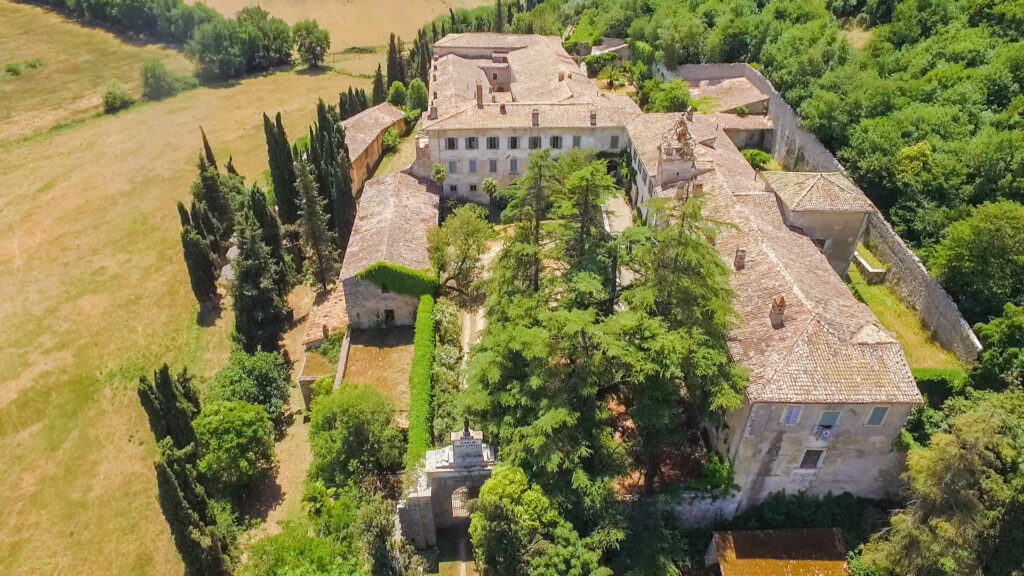
Grancia di Tecchiena foto www.alatriturismo.it
In the surroundings of Alatri stands the Protocenobio di San Sebastiano, or Grancia di Tecchiena. This large granary, which belonged to the Carthusians of Trisulti, is the finest example of 18th-century architecture in Alatri. Inside is the small Church of St. Bartholomew the Apostle, a stop on the Via Francigena del Sud.
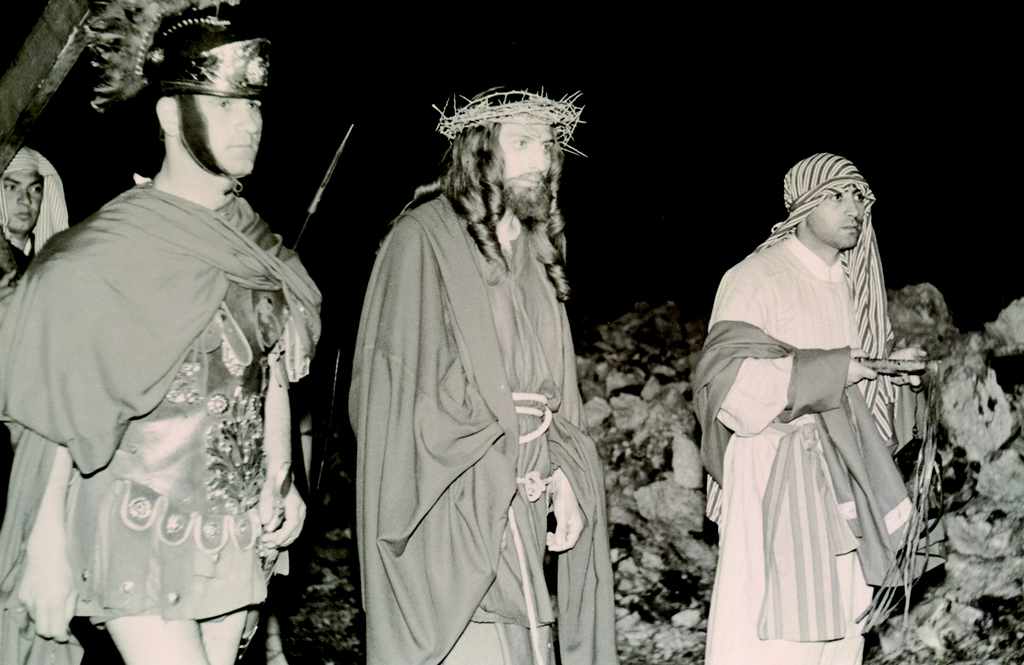
Good Friday in Alatri – venerdisantoalatri.it
In the ancient town of Alatri, on Good Friday evening, a reenactment of Jesus’ last days has been held since 1835. It originates from medieval representations inspired by the Old and New Testament and staged by hundreds of participants.
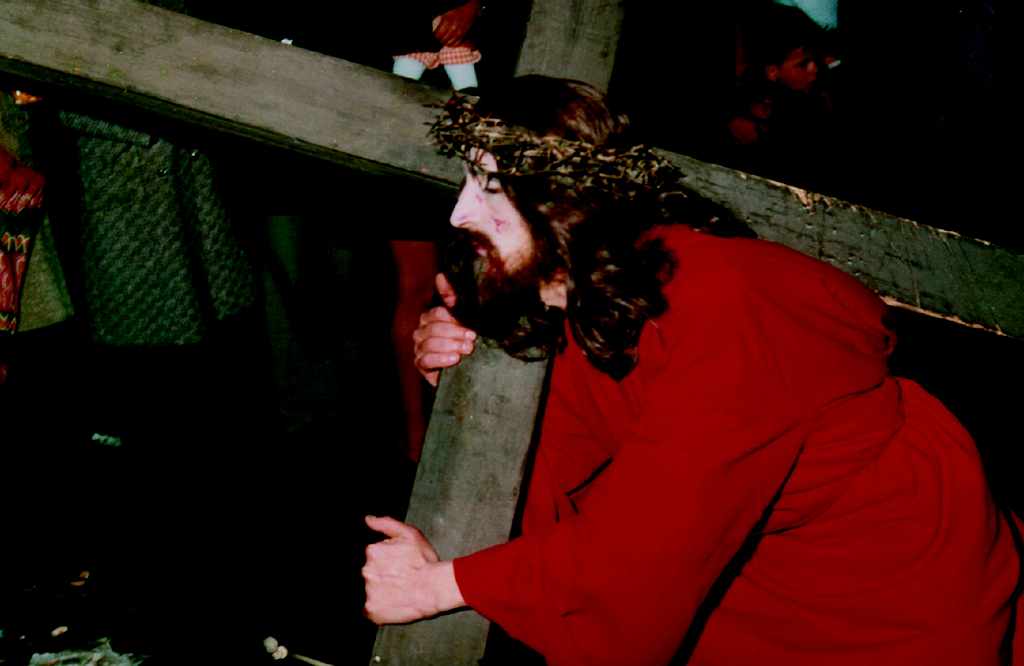
Il Venerdì Santo ad Alatri, Gesù porta la Croce – www.venerdisantoalatri.it
For almost 200 years, it has been telling the story of the world’s salvation in three crucial days, Palm Sunday, Good Thursday and Good Friday. The highlights of the re-enactment are the Crucifixion and the Miserere sung in the streets in the evenings preceding Good Friday.
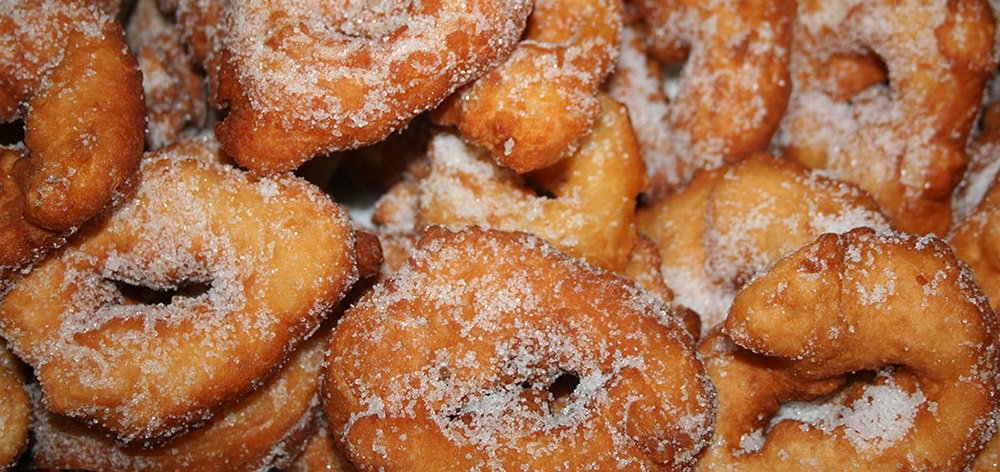
Tartalicchi during Carnival
The typical cuisine is mainly based on cereals and vegetables. Among the local dishes, we discover ‘mazzacrocchi’, made with beans, and ‘tartalicchi’, a dessert made with boiled potatoes prepared during Carnival.
